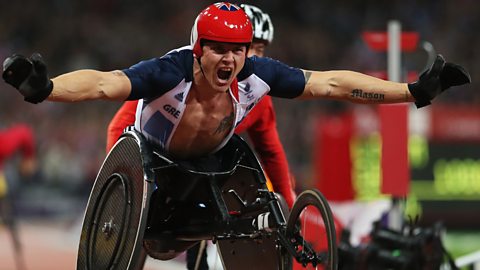Disability, barriers and encouraging inclusion in sports
There are around 11 million disabled people in the UK. This includes people with physical, visual and hearing impairments and people with learning difficulties. The participation of disabled people in sport is significantly lower than that of non-disabled people, for all age groups.
This is due to:
- physical barriers – many sports/activities need to be adapted in some way to allow disabled participation
- access – special doors and ramps often needed
- transport – may be difficult; specialised transport and carers often needed
- communication – needs to be appropriate from coaches/other participants, for example, sign language or digital amplification equipment
- psychologicalRelating to the mind, eg mental attitude and personality. – lack of confidence, unsure of ability
- discrimination/negative attitudes – facilities, clubs or organisers not planning or providing for disabled participants
- opportunity – appropriate sports or sessions need to be local and available
- awareness – disabled people may not be aware of organisations/facilities catering for their needs
- lack of media coverage and role models – this is improving with the inclusion of disabled sports in the Olympic and Paralympic Games
Many sports and physical activities do ensure inclusionMaking sure that everyone can take part. of disabled people. Inclusion requires staff and volunteers to have a positive attitude, communicate effectively and be able to adapt activities.
Adapting sports and activities for disabled participation
Disabled people take part in sport in a range of ways – with non-disabled participants and/or with other disabled people.
Sports and physical activities can be adapted by changing:
- where it is done – for example, a shorter distance, lower net, court with zones
- how it is done – for example, two bounces before you hit the ball, roll instead of throw
- what is used – for example, a bell-ball, a flag instead of a whistle
- who does what – for example, uneven teams – 6v4, a guide runner
Two role models for disability sport
Ellie Simmonds OBE – swimmer
Ellie is a four-time Paralympic champion. She made her debut at Beijing in 2008 and won two gold medals and broke two world records at the London 2012 Games. She was awarded an OBE in 2013. Ellie has achondroplasia dwarfism.
Ellie is one of the most recognised Paralympians and uses her success to campaign for more and better sports opportunities for young disabled people.

David Weir CBE – wheelchair athlete
London 2012 was David's fourth Paralympic Games and he won four gold medals to add to his collection. He competes regularly in the London Marathon, which he won for a record-equalling sixth time in 2012. David is a T54 athlete. This is the specific classification for disability athletes. The classification varies according to factors such as muscle strength, range of movements and amputations.
David is passionate about raising the profile of Paralympic sport so established the Weir Archer Academy to coach up-and-coming wheelchair racers.
